
SYRENE: An Underwater Embedded Artificial Intelligence Camera for Invasive Fauna Monitoring
analyzing images over a long period of time, offers a promising alternative to post-process detections running on data centers, without energy constraints.The team focused on Pterois volitans/Miles (lionfish), a species widespread across the globe. Accidentally introduced in the early 1990s to the Caribbean Sea and western Atlantic, it has invaded this area where it causes serious damage to marine ecosystems. For example, the biomass of small fish has declined by 65% in the Bahamas reefs in just two years due to its intense predation. It disrupts biodiversity and local food chains. [1]A lionfish in
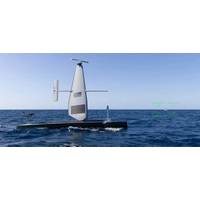
Saildrone USVs Support Mission to Secure US Southern Border
a newly upgraded sensor suite will monitor illegal activity along the southern maritime approaches, operating in support of Joint Interagency Task Force South (JIATF-S) and US Naval Forces Southern Command/US Navy Fourth Fleet (NAVSOUTH/FOURTHFLT).Two Saildrone Voyager USVs are also deployed to the Caribbean Sea in support of Operation Southern Spear.The Saildrone Voyager is a 10-meter USV designed to support distributed maritime operations by monitoring critical areas, such as chokepoints, for illicit activity. Equipped with advanced sensors, radar and communication systems, Saildrone USVs can detect
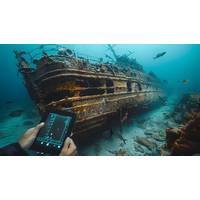
Billions in Lost Treasure: How Modern Technology Is Revealing Hidden Riches from the Depths!
have caused ships to sink - further narrowing search areas.Treasure-Rich Waters Around the World Certain regions of the world's oceans are notoriously abundant with treasure-filled wrecks, drawing the interest of treasure hunters and marine archaeologists alike. Of particular note is the Caribbean Sea; as it served as a major route for Spanish treasure fleets returning home from America via Florida, Cuba, and the Bahamas - leaving wrecks from these fleets behind such as 1715 Fleet which was severely damaged during a hurricane.Indian Ocean waters are notorious for hiding vast riches, with treasure

Marc van der Donck Receives 2022 Alexander Dalrymple Award
Rhett Hatcher at the UKHO’s office in Taunton, England. The 2022 presentation took place this year due to delays in awarding previous winners caused by Covid-19.The 2022 award recognizes Capt Marc’s positive impact on hydrography since 2014, when he first attended the Meso-American and Caribbean Sea Hydrographic Commission’s (MACHC) Regional Hydrographic Council meetings (RHC).Since then, Capt Marc – who as well as chairing the IC-ENC from 2016 was also National Hydrographer for the Netherlands Hydrographic Office – has helped improve data sharing between members of the
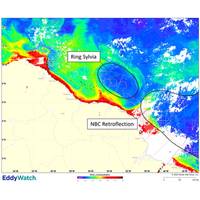
First North Brazil Current Ring of 2022 Forms Offshore Suriname and French Guiana
can exceed 1.0 m/s (Figure 3). Significant subsurface currents associated with these rings can extend as deep as 400 m. Their structure begins to disintegrate as they encounter Trinidad, Tobago, and the Windward Islands, with their energy ultimately filtering in between the islands and into the Caribbean Sea.A seasonal cycle is observed in the formation and migration of NBC rings with the deepest, strongest rings forming in the boreal fall and winter months (October to February) when the NBC transport is at its strongest and deepest. In contrast, the rings shed in the spring and summer months (March
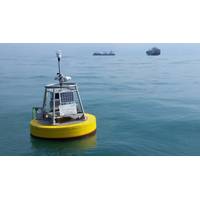
RDSEA "Pic of the Week": RDSEA Coastal MetOcean Hybrid
RDSEA Coastal MetOcean Hybrid; Surface Meteorology, water column currents (ADCP), turbidity, and density. Caribbean Sea, Moin, Costa Rica. In partnership with Campbell Scientific Carib (San Jose), Centro Cientifico Tropical (CCT, San Jose), and APM Terminals S.A., Terminal de Contenders de Moin (TCM), is the largest infrastructure project in Costa Rican history. Developed to support Costa Rica’s growing agricultural export industry as well as an active manufacturing sector. RDSEA'steam was responsible for maintaining MetOcean data parameters in near-real-time during the dredging phase of the

Scientists Come Closer to Solving Caribbean Seaweed Mystery
Nature Communications.Nitrogen is found in human and animal waste and in fertilizers. The results suggest that sewage and farm runoff that’s flowing into rivers throughout the Americas and then on to the ocean is feeding offshore sargassum growth. Currents carry much of this seaweed to the Caribbean Sea, where it’s bedeviling the region’s tourism-dependent coastal economies.The samples also showed, for example, a 111% rise in the ratio of nitrogen to phosphorus during the same time frame. That ratio has been nearly constant across the world’s oceans going back decades. The
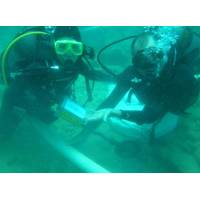
Treasures of the Deep
controls.”Hollywood has made movies about the thrills of treasure hunting for decades, and JW Fishers’ search equipment has been a part of numerous high-profile films. Paul Walker and Jessica Alba used the Pulse 8X in multiple scenes of “Into the Blue” in search of gold in the Caribbean Sea. Matthew McConaughey and Kate Hudson both used the detectors looking for a sunken Spanish galleon called the Aurelia in “Fool’s Gold.” JW Fishers has also been featured on “Rob Riggle Global Investigators” and on “The Curse of Oak Islands” Series multiple

This Underwater Base Could Become the ISS of the Ocean
will have access to a laboratory, a medical bay, and even a hydroponic greenhouse where they can grow fresh food — assuming Proteus comes to fruition.Cousteau told Forbes he expects it'll take three years and $135 million to build the underwater base 60 feet below the surface of the Caribbean Sea, just off the coast of Curaçao.If he can raise the money to do that, the facility will then cost about $3 million per year to run, but he anticipates renting space on the facility to universities and private companies, which will help offset that expense.For now, though, he's just
 December 2025
December 2025





